I'm excited to announce that later this month we will have 4 guest bloggers write their own posts and with a little help, upload them to this blog. Even more exciting is that those guest bloggers will be between the ages of 9 and 11 years old. That's right, our guest bloggers will be 4 of you fourth graders!
We have been working on writing summaries of the books we're reading in class, and each of our 4 reading groups are in competition to get the highest mark on their summaries. I've already chosen 2 winners. One has been announced today, and the other will be announced on Tuesday. The remaining 2 winners will be announced later next week. We will have one guest blog post each week before February vacation.
If you win, and you would like your school photo* posted with your summary, bring in a copy, along with a signed note from your parent granting me permission to scan it and post it here on this blog.
*If you don't have a school photo, a head shot with any plain colored background is fine.
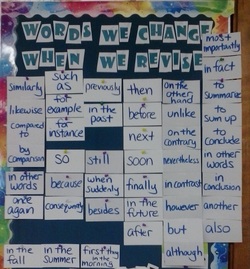
Here are the transition words we've used during our Morning Meeting activity this month.
You've learned to add these words to your ideas and combine sentences so they way they go together is clearer.
Different transition words are used for different types of information. You might need a transition word to show:
1. How things are the same
2. How things are different
3. The order in which things happened
4. That one thing made another thing happen
5. A summary of several details
Can you give an example of which word goes with which type? Here's an example:
In conclusion is used for a summary of several details.
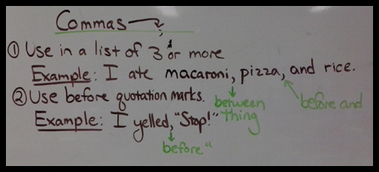
Here are two ways that commas are used in your writing:
1. Put them in a list of things, like "Running, jumping, and playing."
2. Put them before quotation marks, like I begged, "Please let me have the turkey drumstick this year."
Can you write a sentence that has a list of 3 gifts you would love, and use commas correctly?
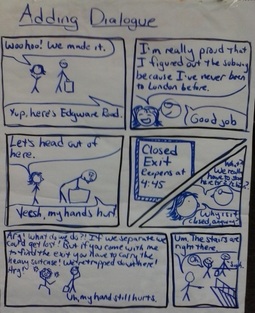
Do you like comics? To help add dialogue to your story, just imagine you are writing a comic strip!
In a comic, everything that happens has to be expressed through what the characters are saying.
Then, when you go to add the dialogue to your story, simply put "quotation marks" around the words they say instead of the speech bubbles. Viola! Your personal narrative now has dialogue inside.
I was very impressed with the comics everyone did in class. Do any of you like to read or write comics for fun?
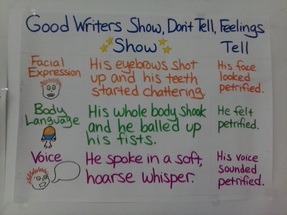
When you're writing a story, if you really want your reader to get how your character is feeling, show them.
Tell the look he or she had on their face when an important event happened. Did his mouth drop when something shocking happened? Did he smile shyly when he got a compliment?
Describe their body language to show how your character reacts to the thing that happened. Did she jump up and down? Did she stomp out of the room?
Finally, describe how your character's voice sounded when he or she said something in response to an important event. Did he whisper gently or shout at the top of his lungs?
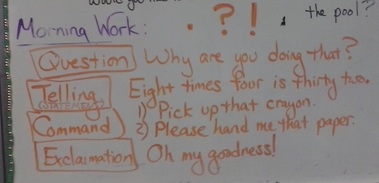
Knowing the 4 sentence types will help you learn to use punctuation correctly in your writing.
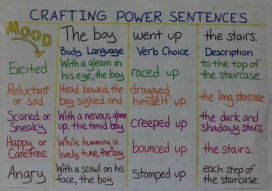
Last week in Writer's Workshop (WW) we learned how to create more interesting sentences.
First, think of the mood you want your sentence to create.
Then, describe your character's body language, pick a strong, precise verb, and finally, describe where the character is.
In the example, instead of just telling our reader "The boy went up the stairs" we can also create a scary mood for our reader by writing, "With a nervous glace up, the timid boy creeped up the dark and shadowy stairs.
Now you try! Can you make your reader feel your excitement in this sentence: "I walked outside with my costume on."


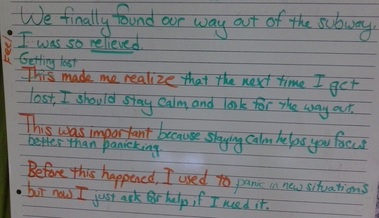

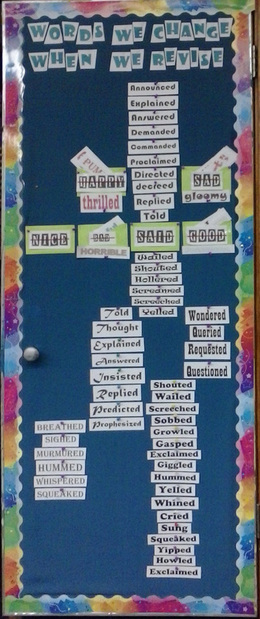



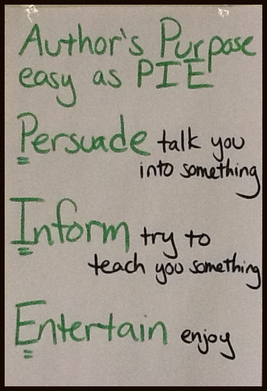

 RSS Feed
RSS Feed